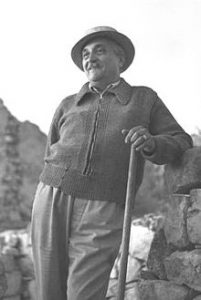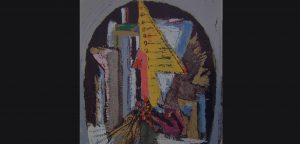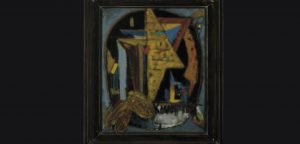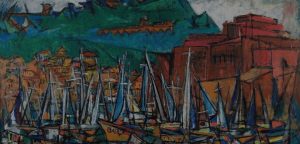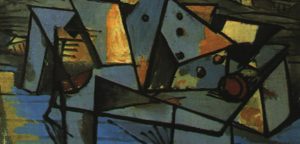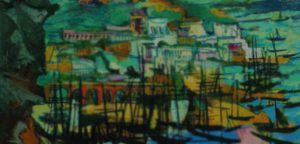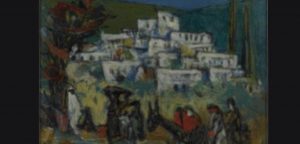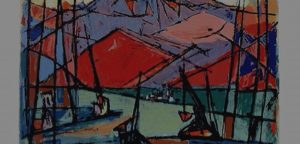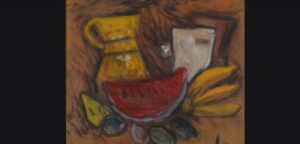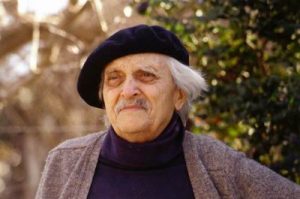Marcel Janco was born on May 24, 1895 in Bucharest, Romania.
1895 - 1984
Marcel Janco
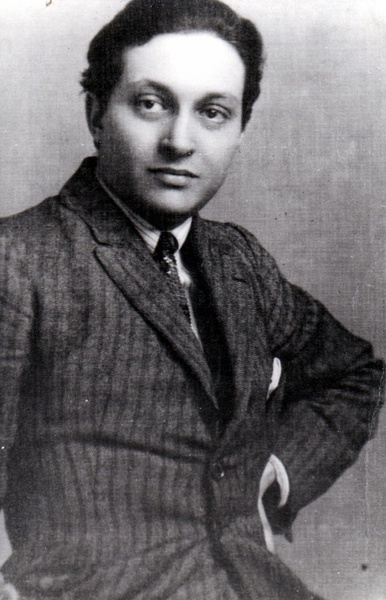
description
An Israeli and Romanian artist and architect, publisher and writer, a significant figure in the world avant-garde of the 20th century.
He was born into a Jewish family. While studying at a secondary school, he also took private piano lessons and individual painting lessons from Romanian Expressionist Joseph Izer.
He was a theorist of Dadaism and one of the leading exhibitors of constructivism in Easter Europe, as well as a founding member of several creative and innovative associations of artists in Romania and Israel. Marcel Janko became an organizer and designer of the village of painters and sculptors in Ein Hod near Haifa (Israel), where the Yanko-Dada Museum and studios are now actively working. He is a laureate of several prestigious awards in his historical motherland.
Key ideas:
Art experts divide all the works of Marcel into the first, European (mostly Romanian) and Israeli (after 1941) periods. However, even the fact that the museum opened one year before the artist’s death was named “Yanko Dada” indicates that there is a connection between two periods, each of which has 30-40 years of active searches and embodiment.
In his younger years, Janco easily “jumped” from one style platform to the basics of another, although the techniques remained mastered and were used during 70 years of his creative career. He always used a variety of techniques – painting and relief, collage and engraving, fresco painting.
In 1920s, creating exceptionally abstract things, the artist based on specific forms: human figures, landscapes or objects for still lifes. In abstract works, experts see the influence of Cubism and Expressionism, while decorativeness uncharacteristic of the earliest works is manifested in some figurative works, and even the signs of Surrealism rejected by him.
Having settled down on the Israeli land, the artist changed his palette – it gains cheerful brightness that substituted dark shades with juicy and positive views of Mediterranean beauty. The return from abstraction to figurativeness is dictated by themes – Janco paints the heroes of the time, ordinary citizens, builders and other hard workers, soldiers and people fighting for peace and strengthening their new homeland. The combination of figurative elements and abstract details shows the deep interest of the mature master in the Jewish tradition of the interpreting meanings into a symbol. M. Janco repeated: “I paint in Kabbalah”.
Villas, houses and buildings built according to Janco’s designs are distinguished by the elegance of lines, the lack of ornaments and simple geometric shapes. When you look at them, you cannot help recalling the designer’s abstract paintings, in which the harmony of form and line reigns.
1895
1915
1918
1921 - 1922
1924
1941 - 1950
1950
1960 - 1970
1983
1984
The birth of the artist
He began studying architecture at the Zurich Polytechnic School
He began studying architecture at the Zurich Polytechnic School. Having met first Hans Arp, then poets Richard Hulzenbeck, Tristan Tzara, Hugo Ball, he got inspired with innovative ideas and after one year joined Art Nouveau circles of creative people (artists and writers), the center of meetings of which was “Voltaire Cabaret”. He took an active part in the formation of the first Dada group. Janco created masks for the performance to the opening of the Dada Gallery (1917).
Became a member of Das Neue Leben
Became a member of Das Neue Leben (“New Life”) – a group of artists in Basel, which also included Arp, Giacometti and Sophie Taeuber. After the divergence of views with theorist Dada Tzara, he became one of the founders of Radikale Künstler (“Radical artists”), where Hans Richter joined the group. Janco exhibited abstract reliefs at the first group show of Dada at the Museum of Arts and Crafts of Zurich.
He went to Paris
He went to Paris with the mission to convince his French colleagues that Dada is a universal movement. However, the majority considered the ideas Jewish mysticism or even “Kabbalah” incompatible with rational French thinking. Janco returned to Bucharest, where he immediately conducted an exhibition of his works, which was followed by others in Romania and other countries.
Founded the first Art Nouveau movement in Romania
Founded the first Art Nouveau movement in Romania, organized the first exhibition of the magazine “Contimporanul” named “International” in Bucharest. He was the editor of that magazine until 1932. He made a significant creative contribution to the publication of the avant-garde magazine “Punct” (“Point”). Together with his brother, he opened an architectural bureau. Both in architecture and in painting, his creativity fell under the influence of Constructivism and Cubism.
He became a teacher - taught the fine arts to the students of "Seminar Ha-kibucim" college for 17 years
After the first Jewish pogroms, he moved with his family (his wife and two daughters) to Eretz Israel, which he visited as far back as 1938. He was well integrated into the local art environment and in 1942 his works were exhibited at a personal exhibition in Tel Aviv. He worked as an architect and was engaged in the protection of cultural monuments, planned villas and national parks. He created scenery for the Cameri Theater (founded in 1944). He became one of the founders of the association of artists “New Horizons” (1948), participated in its exhibitions. He became a teacher – taught the fine arts to the students of “Seminar Ha-kibucim” college for 17 years.
Became a laureate of the Dizengoff Prime
Became a laureate of the Dizengoff Prime (1951), participated in the Venice Biennale (1952), initiated the arrangement of the village of artists in Ein Hod, planned a place to the south from Haifa at the foot of Mount Carmel, soon settled there with a small colony of artists. Later, workshops, the Central Art Gallery and private galleries of masters were opened in the village. M. Janco called the implemented project “the latest phenomenon in the spirit of Dada.” He made frescos and sketches for wall ceramics for the shipping company Tsim. The artist was awarded the Histadrut Prize (1958).
He was an exhibitor of many Israeli and international exhibitions
He was an exhibitor of many Israeli and international exhibitions, including those in Paris: the Louvre (1964) and the National Museum of Modern Art (1965-66 and 1967). He received the main award of his country – the State Prize of Israel (1967). Personal and group exhibitions took place at the Jewish Museum of New York (1976 and 1981); at the Israeli Museum (Jerusalem, 1976), in Italy and Switzerland.
Participated in the design and preparation of the exhibits of the Yanko Dada Museum
Participated in the design and preparation of the exhibits of the Yanko Dada Museum in the village of Ein Hod, painted the bright canvas “Composition in Green and Red.”
The death of the artist
The artist died on April 21, 1984 in Tel Aviv, Israel.

